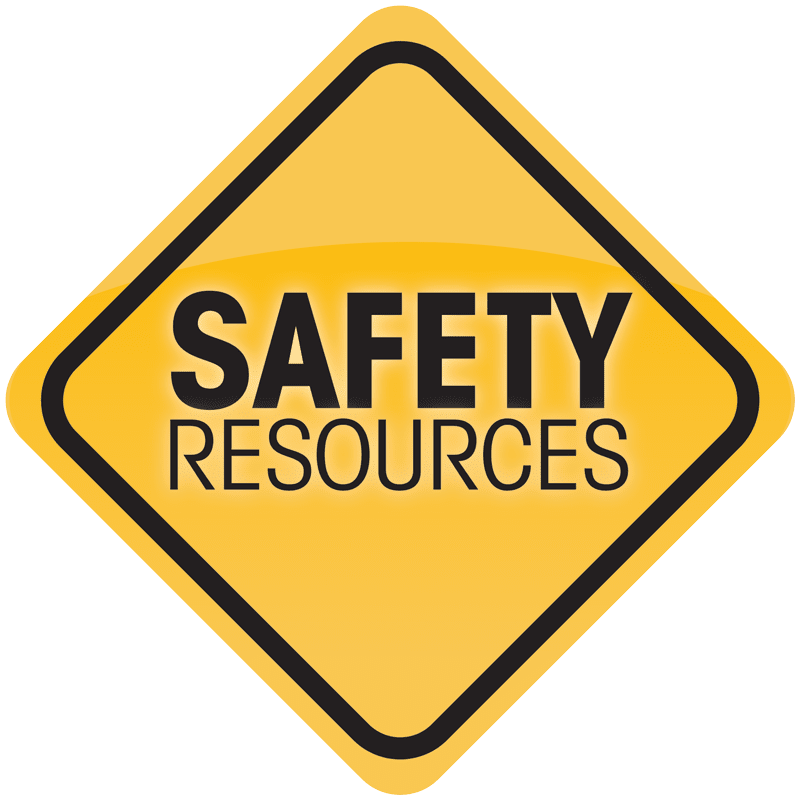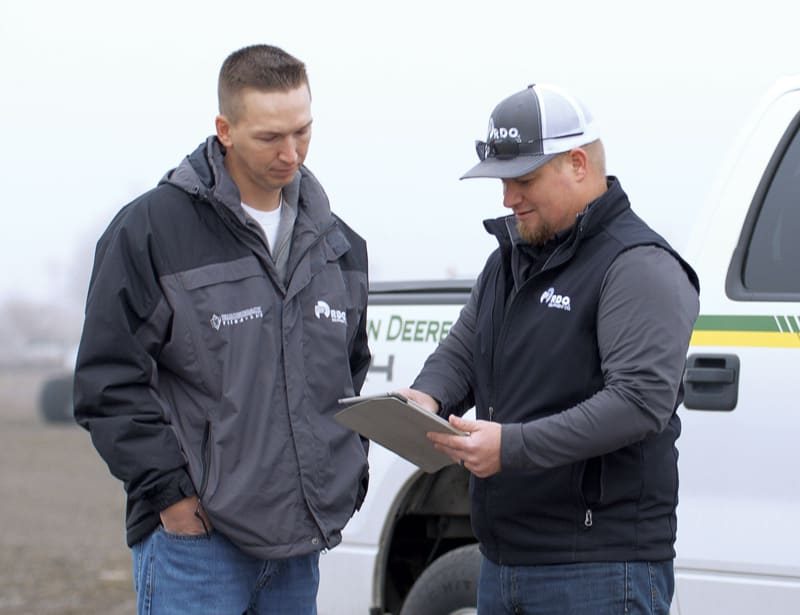No argument can be made against the value of safety in the workplace. Creating a safe work environment for all employees must be a top priority for all companies, whether it’s behind a desk in an office, behind the wheel of a mower at a commercial property, or behind the shop doors at an equipment dealership.
Implementing and following a safety program in a dealership setting comes with a unique set of challenges. Some companies have multiple locations, which means multiple teams to train and check up on. Plus, the general activities of a service shop, parts warehouse or equipment yard lend themselves to potentially-hazardous situations not typically found in most worksites. No matter a company’s situation, one factor remains consistent: a safety program is a must.
Building a Culture of Safety
Safety is successful when it’s ingrained in a company’s culture. It must be modeled and supported starting from the top down, then lived by every team member, every day.
RDO Equipment Co., a network of more than 75 equipment stores based in Fargo, N.D., has seen positive results from its safety program, due largely in part to strong support from its leadership and emphasis on making safety a vital part of its culture.
RDO shares 4 safety best practices that every dealership, no matter their size, can immediately put into action.
1. Assign responsibility.
While safety is everyone’s job, the oversight of a safety program should have one person for which it is a primary responsibility. With this in mind, the first step of building a safety program is designating a Safety Lead at each location. Appointing a management-level team member to this position will mean the program is properly enforced and demonstrates the company’s leadership’s commitment to the program.
Following that, the next step is to establish a safety committee — a group of managers and team members — for added support. Not only does this provide a healthy mix of perspectives and input, the Occupational Safety and Health Administration (OSHA) requires both managerial and non-managerial participation on safety committees.
When considering jobsite safety, diffusion of responsibility — the concept that people are less likely to take responsibility or action when others are present — comes into play. The more people who are deemed “responsible,” the greater the general assumption that someone else will address an issue. By designating a single manager to champion safety at each site, there will never be a question of whether or not someone will follow through, follow up or take action.
Responsibilities of the Safety Lead include hosting monthly safety meetings with the committee, conducting monthly inspections and ensuring that all safety issues discovered in the inspection are assigned for resolution.
Many organizations don’t have the resources to dedicate individuals to solely be safety champions. Putting one person in charge of safety doesn’t mean it has to be their only job. Any employee in a management role can add the responsibility of Safety Lead to their job description.
2. Follow up.
Any ongoing effort in a business needs to include regular reviews and follow-up strategies as part of the overall plan and this includes safety initiatives as well.
Accidents are going to happen. Incidents will take place. Even the best safety plan isn’t immune to human error. It’s important to employ follow-up strategies to learn from accidents. In order to be successful, these initiatives must be treated as a means to improve, not for placing blame.
Safety Leads should consider sharing incident reports with employees and other stores, anonymously, to bring awareness to an issue and to try to prevent it from occurring again in their own dealership or elsewhere.
A deeper follow-up strategy is to conduct a root cause analysis after incidents to delve into the issue and determine what’s needed to prevent a similar incident from occurring in the future. RDO bases these reports on the concept of 5 “whys:” asking why 5 times to lead back to the ultimate or root cause of the issue. This process can also reveal a topic for a widespread safety discussion. Most importantly, following up on incidents can lead to a better policy or new resource to prevent the same incident from happening again or at another location.
3. Promote ongoing communication.
Similar to following-up on incidents, ongoing communication is key to a safety program’s success. Not only does frequent communication ensure safety remains at the top of your mind, it’s a great way to keep seasonal workers and interns in the loop on important safety initiatives.
Ongoing safety communication can include sharing safety tips online via email or on a bulletin board, or by holding more formal discussions, such as a daily safety reminder or monthly meeting that dives into a larger topic. Discussions can be built into meetings already taking place or provide a reason to bring the staff together more often.

Consider holding a quick morning meeting every day. Gather the entire team for 5-10 minutes and let everyone share a quick update for the good of the group — perhaps something exciting they’re working on or a change in their schedule. Then, let the Safety Lead close with a quick tip for the day and a reminder for everyone to be safe.
On a more in-depth scale, a longer monthly team meeting can weave in a safety message along with updates and general housekeeping items. The message of these will vary. One tip is to plan a calendar of the 12 most important safety topics for the year, addressing one each month. For example, July’s topic could be tips for working safely in heat, and September’s topic might be forklift operation and bystander safety. Be flexible and ready to add something new if there’s a pressing need.
For dealerships with multiple locations, an added challenge of executing a safety program also brings an added opportunity. Each store and each team is unique, which can make it tough to have consistent best practices across all locations. But you can use this to your advantage. Safety leads and committees at each location can share ideas among themselves and expand their knowledge. A monthly safety conference call among safety leads can be a quick and simple way to get everyone on the same page.
4. Never work alone.
Once a safety program’s processes have been put into place, leadership can begin to identify actionable changes that can be implemented as new safety policies.
Here’s an example from RDO. Most dealerships employ field service technicians, parts runners and salespeople. It’s typical for employees in these roles to spend time alone, whether driving in a company vehicle or working at a remote jobsite fixing a machine. Working alone can present a potential threat to the employee’s safety in the event of an accident.
Trying to implement a policy that states an employee can’t work alone while away from the store isn’t realistic. However, technology can make it feasible to ensure these employees have a reliable communication link to their store or emergency services.
RDO began installing GPS satellite communication devices in vehicles and as wearables for employees who work alone and remotely. The devices offer the ability to quickly and easily send pre-programmed text messages if the work-alone employee needs assistance. While cell phones already offer this connection, cellular service can be intermittent or nonexistent in many areas and 100% reliability is crucial to protect work-alone employees, especially if they find themselves injured or in danger.
The significant impact of this kind of practice is best exemplified non-analytically. Shortly after implementing this program, an RDO field service technician’s wife called his store’s general manager. She told him how grateful she was that the company implemented this policy because now she won’t worry when her husband is working at remote sites.
Measuring Success
While some successes can be measured with simple feedback, there are options to add data-driven metrics to gauge a safety program’s success and to look for ways to improve. While not one of the crucial steps needed to build a dealership’s safety program, it’s a tip worth mentioning, especially for those that already have established programs and are looking to improve.
RDO benchmarks its safety program based on OSHA’s Total Recordable Incident Rate (TRIR) and Days Away Restricted or Transferred (DART) standards. In the past year alone, RDO has seen an improvement of more than 28% in both TRIR and DART.
Access additional safety resources here.






